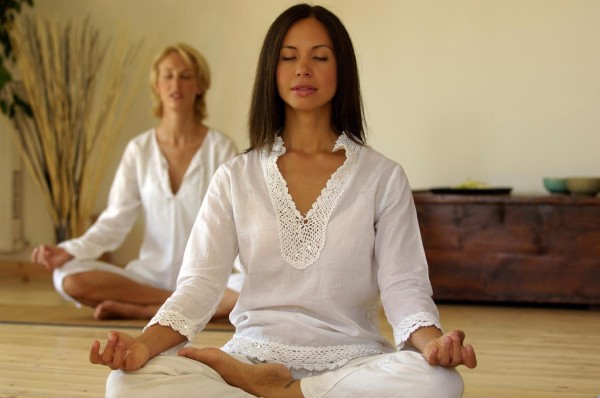Yoga: How to reap the benefits of connecting with your breath
12/02/2015 / By Julie Wilson

Western science is finally catching up with the amazing and healing health benefits of yoga, also referred to as the union of individual consciousness with the spirit of the universe, in which humans all originated.
If that sounds too deep for you, just picture yoga as being physical exercise that incorporates stretching, deep breathing and the beauty of being still – which aids us in our ability to clear our minds, thus recharging the body, mind and spirit.
Coming onto your mat to practice yoga is one of the most effective therapies for both the body and mind, offering nearly every health benefit imaginable. Yoga Journal named 38 ways yoga improves your health, and here are a few of them:
- Perfects your posture – focuses on straightening and lengthening your spine
- Builds muscle strength – builds flexibility and protects us from arthritis and back pain
- Protects your spine – keeps your spinal disks supple through proper motion
- Prevents cartilage and joint breakdown – keeps joints fresh by moving them through full range of motion, releasing nutrients for joints and cartilage
- Increases blood flow – yoga’s relaxation poses improve circulation
- Makes you happier – studies show yoga increases serotonin levels
- Improves balance — regular yoga practice increases proprioception (the ability to feel what your body is doing and where it is in space)
Practicing yoga regularly (it’s actually meant to be practiced every day) offers even more health benefits than the aforementioned, some of which are described in Barrie R. Cassileth’s book titled, The Alternative Medicine Handbook.
100% organic essential oil sets now available for your home and personal care, including Rosemary, Oregano, Eucalyptus, Tea Tree, Clary Sage and more, all 100% organic and laboratory tested for safety. A multitude of uses, from stress reduction to topical first aid. See the complete listing here, and help support this news site.
The science says “Do yoga”
“A substantial amount of research has been conducted on the effects of yoga. Research shows that yoga practice can induce physiological change, increase skin resistance (a measure of reduced stress), cause the heart to work more efficiently, decrease respiratory rate and blood pressure, improve physical fitness, and produce brain-wave activity indicative of relaxation,” writes Cassileth.
Her book focuses on the origin and effectiveness of more than 50 alternative therapies ranging from homeopathy to acupuncture to yoga.
“Yoga is a disciplined activity, based on Hindu philosophy, that creates a union of mind, body, and spirit. It is a method by which one strives to experience the nature of reality, the divine spirit, or whatever phrase one assigns to a meaning greater than the self,” Cassileth writes.
Developed 5,000 years ago in India and one of the most common types of yoga, Hatha Yoga “aims to cultivate fitness, relaxation, and well-being, and can play a valuable role in stress reduction as a complementary therapy.
“Its three main components include proper breathing, movement, and posture. During the practice of postures, practitioners pay special attention to their breathing, exhaling while performing certain movements, and inhaling during others.
Cultivating prana or life energy through yoga
“Breathing is deep and from the diaphragm. Special breathing techniques are employed. In some yoga postures, for example, one inhales through a single nostril only, and exhales through the other nostril,” writes Cassileth.
“Special breathing is considered important for several reasons. Deep breathing promotes relaxation, and specific breathing rhythms assist in maintaining the postures.
“Also, yogic practice emphasizes the cultivation of prana, or life energy, and its practitioners believe that prana can be cultivated through breathing. Prana is similar to the qi of Chinese medicine, an invisible life force said to pervade human bodies and everything else in the universe.
“Yoga was developed as part of a spiritual discipline. The purpose of yoga is to bring the practitioner to a higher state of awareness, an awareness of the divine nature and oneness of creation. By promoting disciplined focus on mind and body, yoga is said to enable a greater consciousness of daily life and of its divine origins.”
Additional sources:
http://www.yogajournal.com/article/health/count-yoga-38-ways-yoga-keeps-fit/
http://www.yogananda-srf.org/What_Is_Yoga,_Really_.aspx#.ViaOPuw1K30
http://www.amazon.com/Alternative-Medicine-Handbook-Barrie-Cassileth/dp/0393045668
Tagged Under: Deep breathing, exercise, fitness, Hinduism, Meditation, natural health, Yoga




















